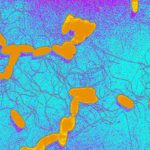Link to Pubmed [PMID] – 25981468
Methods Mol. Biol. 2015;1311:91-109
Spoligotyping was developed almost 18 years ago and still remains a popular first-lane genotyping technique to identify and subtype Mycobacterium tuberculosis complex (MTC) clinical isolates at a phylogeographic level. For other pathogens, such as Salmonella enterica, recent studies suggest that specifically designed spoligotyping techniques could be interesting for public health purposes. Spoligotyping was in its original format a reverse line-blot hybridization method using capture probes designed on “spacers” and attached to a membrane’s surface and a PCR product obtained from clustered regularly interspaced short palindromic repeats (CRISPRs). Cowan et al. and Fabre et al. were the first to propose a high-throughput Spoligotyping method based on microbeads for MTC and S. enterica serotype Typhimurium, respectively. The main advantages of the high-throughput Spoligotyping techniques we describe here are their low cost, their robustness, and the existence (at least for MTC) of very large databases that allow comparisons between spoligotypes from anywhere.
